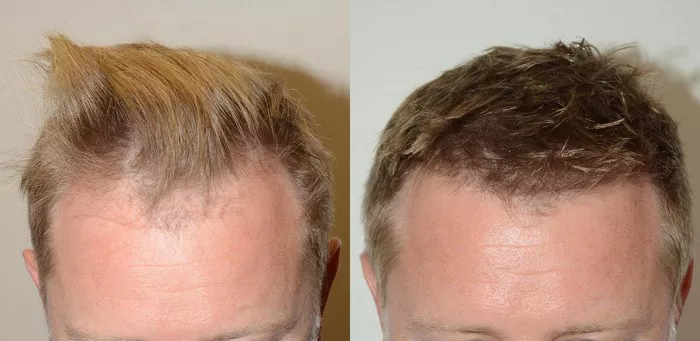When considering a hair transplant, potential candidates often have numerous questions about the procedure, its effects, and the recovery process. One common concern that arises is the duration for which the scalp remains red after a hair transplant. The presence of redness on the scalp post-transplant can be a source of worry for many individuals. In this article, we’ll delve into this topic and provide you with a comprehensive understanding of how long you can expect your scalp to remain red after a hair transplant. We’ll explore the factors influencing this redness, strategies to manage it, and what you can anticipate during your recovery journey.
Will my scalp turn red after hair transplant?
It’s common for the scalp to turn red after a hair transplant. This redness is typically a result of the trauma caused to the scalp during the transplant procedure. It’s a natural response as blood vessels dilate and increased blood flow occurs in the transplanted area. The redness, often referred to as “redness of the graft,” usually subsides within a few days to a couple of weeks, depending on individual healing and the specific technique used. Proper post-operative care, including following your surgeon’s instructions, can help minimize discomfort and speed up the healing process.
The Healing Process and Redness Timeline
Understanding the phases of healing after a hair transplant is crucial to comprehending why redness occurs and how long it might last. This aspect will be divided into several items:
1. Immediate Post-Transplant Redness:
In the initial days following the procedure, redness is common due to the trauma caused to the scalp. This redness might resemble a mild sunburn and is usually most pronounced around the transplanted follicles.
2. First Two Weeks:
As the scalp heals, the redness typically starts to subside within the first two weeks. During this time, you might notice a gradual reduction in the intensity of redness.
3. Two to Four Weeks:
By the end of the second week and into the fourth week, the redness should continue to diminish, becoming less noticeable. Proper care, including gentle cleansing and following the post-operative instructions, can contribute to this reduction.
Factors Influencing Redness Duration
Several factors play a role in determining how long your scalp remains red after a hair transplant. These factors include:
1. Skin Sensitivity:
Individuals with sensitive skin may experience prolonged redness compared to those with less sensitive skin.
2. Technique Used:
The type of hair transplant technique employed can impact the redness duration. For instance, the FUE (Follicular Unit Extraction) method might cause less redness compared to the FUT (Follicular Unit Transplantation) method.
3. Healing Rate:
Every individual’s body heals at a different rate. Factors like genetics, age, and overall health can influence how quickly your scalp heals and the redness disappears.
Managing and Minimizing Redness
Managing redness after a hair transplant is a concern for many patients. This aspect will cover ways to minimize and manage redness:
1. Follow Post-Op Instructions:
Your surgeon will provide specific aftercare instructions. Following these guidelines, including how to clean and moisturize your scalp, can aid in reducing redness.
2. Avoid Sun Exposure:
Sun exposure can exacerbate redness. Wearing a hat or using sunscreen when outdoors is essential to protect your healing scalp.
3. Use Approved Products:
Consult your surgeon about recommended shampoos, conditioners, and topical solutions that can help soothe your scalp and reduce redness.
4. Patience is Key:
Remember that healing is a gradual process. Patience is crucial as your body’s natural healing mechanisms gradually fade the redness over time.
See Also: Can Hair Transplant Scars Be Removed: Scar Removal Options
Conclusion:
In this article, we’ve delved into the duration of scalp redness after a hair transplant, providing you with insights into the healing process, factors influencing redness, ways to manage and minimize it, signs of concern, and final thoughts. Remember, each individual’s healing journey is unique, so it’s essential to consult your surgeon for personalized guidance. By being well-informed and proactive, you can confidently navigate the recovery period and enjoy the results of your hair transplant.


